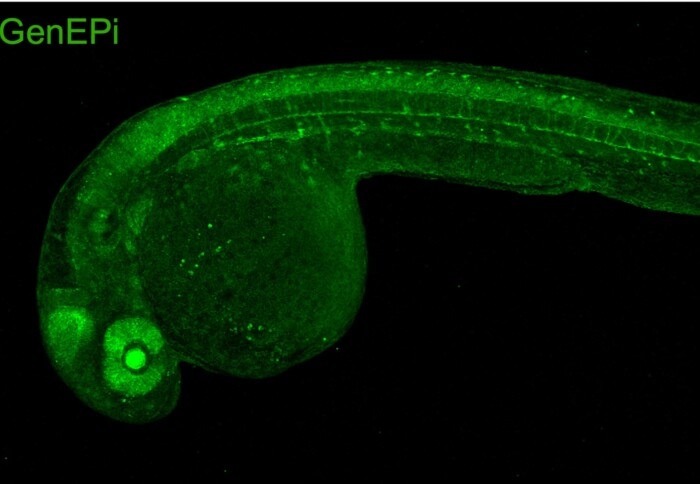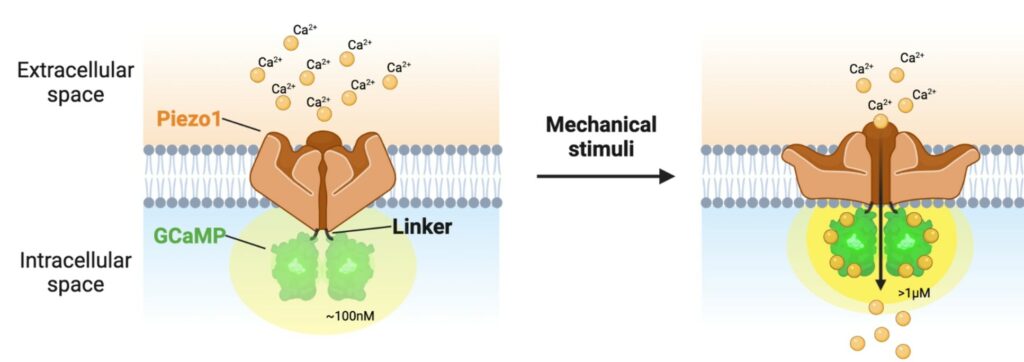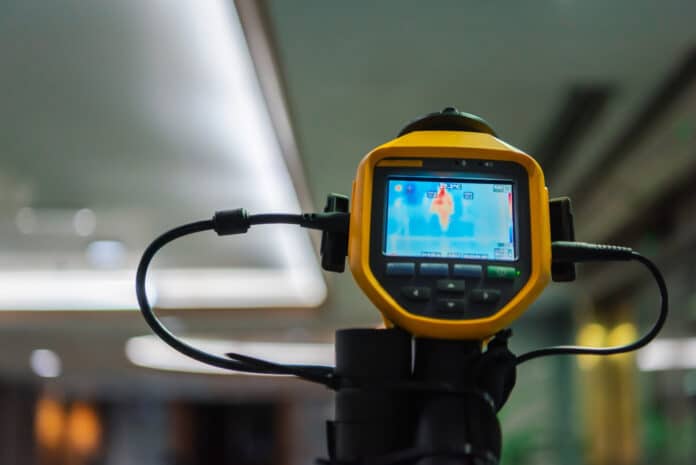For the first time, scientists at Imperial College London have captured video footage of the bodily “pressure sensors”. These sensors, which are tiny cellular structures called mechanoreceptors, play a crucial role in sensing pressure and touch on the skin’s surface.
Until recently, understanding Piezo channel activity required invasive or indirect methods like tracking changes in calcium levels within cells.
Imperial researchers, led by Dr. Periklis Pantazis, created a precise biosensor called GenEPi. This biosensor lights up when Piezo1 channels are active and is visible under a microscope. The discoverers of the sensor won the 2021 Nobel Prize in Physiology or Medicine.
They tested GenEPi on both cells and whole organisms. It successfully detected Piezo1 activity in various human cells, mouse heart cells, and entire zebrafish embryos.

For the first time, scientists have created a way to study Piezo1 activity without being invasive. This method allows researchers to observe how Piezo1 works in healthy and diseased states. Their findings are published in the journal Nature Communications.
Piezo channels are significant for our body to work correctly. Konstantinos Kalyviotis, a researcher in the Department of Bioengineering, said, “These channels help us sense forces inside us and control things like blood pressure. They also tell us when to use the bathroom if our bladder is full.”
Piezo1 is part of many vital systems in our body. These visualizations could helps to understand how Piezo1 works in different situations within cells.
Scientists from Imperial College London and ETH Zurich created GenEPi to study these channels. This unique tool connects to the Piezo1 channel without changing how it works. GenEPi lights up when the media opens up and lets calcium ions pass through. It helps researchers see when and where these channels are active for the first time.
This new ability to see the channels in action could help us understand how they play a role in essential body processes, like forming new blood vessels, cell movement, and cell growth. Cancer cells also use these processes during the growth and spread of tumors.

By understanding how these channels work during diseases, researchers might develop a new kind of treatment that works mechanically instead of chemicals. It could complement the drugs we use more commonly.
Dr. Pantazis, one of the authors, also from the Department of Bioengineering, said, “Seeing how Piezo1 works will help scientists watch how non-chemical treatments affect Piezo1-related diseases. I hope we’ll have drugs based on this method in the next ten years.”
Back in 2010, scientists at the laboratory of Ardem Patapoutian discovered that cells showed electric signals when gently touched with a micropipette, hinting at the existence of Piezo ion channels. These channels, named Piezo after the Greek word for “pressure,” were found to respond to pressure and were later recognized with the Nobel Prize in 2021.
Imperial researchers focused on Piezo1, which is present in almost every cell in our bodies. It helps control growth, how we respond to external forces and our health.
Piezo channels open in response to mechanical changes like pressure, allowing mainly calcium ions to pass through. It leads to signals reaching our brain, prompting reactions like feeling a full bladder or high blood pressure. This process is called homeostasis and helps our body stay balanced.
Researchers now use GenEPi’s design to create similar tools for other ion channels. They’re also exploring Piezo1’s role in various diseases, including cancer.
Konstantinos, a researcher, said, “We’re on the edge of understanding how important Piezo channels are for our health and illnesses. Our special biosensor is a strong tool that can guide us in discovering more as we continue our learning journey.”

Overall, the study’s achievement holds promise for scientific exploration and practical applications, demonstrating the tangible impact of Nobel Prize-winning research on understanding human physiology and technological innovation.
Journal reference:
- Yaganoglu, S., Kalyviotis, K., Vagena-Pantoula, C. et al. Highly and non-invasive imaging of Piezo1-dependent activity across scales using GenEPi. Nature Communications. DOI: 10.1038/s41467-023-40134-y.
